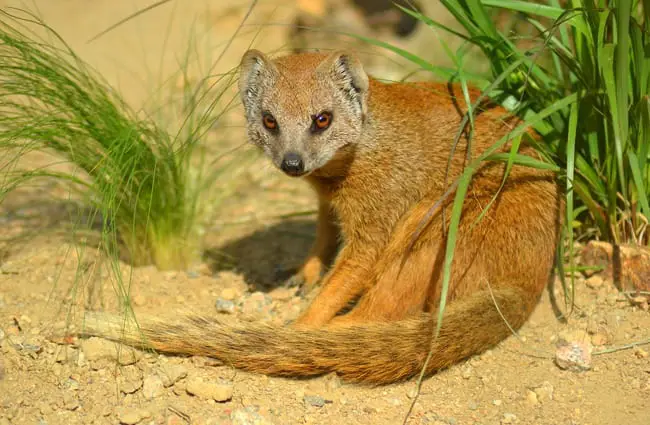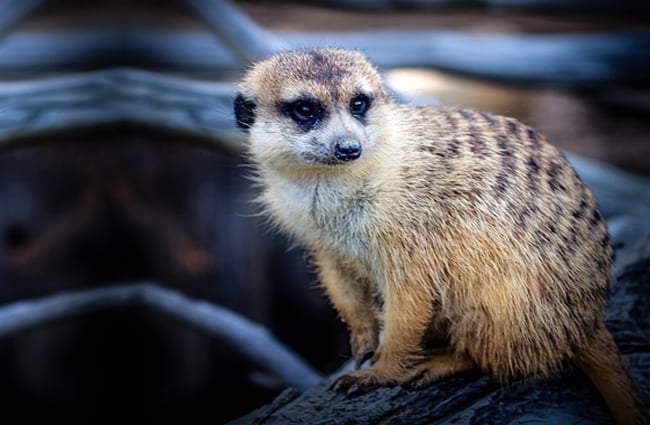The world of mammals boasts a fascinating array of creatures, and among the most intriguing are mongooses. These animals are often celebrated for their seemingly fearless confrontations with snakes, yet they are far more complex and captivating than many realize. This guide delves into the natural history of mongooses, exploring their biology, behavior, ecology, and cultural significance.

What is a Mongoose?
The name “mongoose” refers to a diverse group of carnivorous mammals belonging to the family Herpestidae. There are approximately 15 species, which vary considerably in size, habitat, and behavior. While frequently associated with Africa and Asia, their distribution extends across parts of southern Europe and several islands. They generally resemble long, slender cats, possessing short legs and a pointed snout. Their fur color ranges from shades of gray and brown to reddish‑gold, sometimes displaying distinctive stripes or patterns.
Physical Characteristics
Most mongooses are relatively small, with adults typically measuring between 25 and 40 centimeters in body length, excluding the tail which adds another 20 to 30 centimeters. Their weight varies depending on the species, ranging from around 300 grams to over 5 kilograms. They possess strong claws adapted for digging, and their bodies are remarkably flexible, allowing them to pursue prey into tight spaces. Their keen eyesight and acute sense of smell further contribute to their hunting prowess.
Mongoose Habitat and Distribution
Mongooses exhibit remarkable adaptability, inhabiting a wide range of environments such as grasslands, scrublands, forests, and even agricultural areas. They are particularly abundant in Africa, thriving in habitats from the savannahs of the Serengeti to the rainforests of the Congo. Asian species can be found in India, Sri Lanka, and parts of Southeast Asia. Some species, like the Egyptian mongoose, have even established populations in parts of southern Europe.

Finding Mongooses in the Wild
Observing a mongoose in its natural habitat can be a rewarding experience. Yellow mongooses, for example, are often found in open grasslands, foraging for insects and small vertebrates. They are relatively diurnal, meaning they are most active during the day. Look for signs of their presence, such as digging or scat. Forest‑dwelling species are harder to spot, requiring patience and knowledge of their preferred habitats. Remember to maintain a respectful distance and avoid disturbing their natural behavior.
Mongoose Diet and Hunting Behavior
Mongooses are primarily carnivorous, with their diet varying depending on the species and habitat. Insects, crustaceans, rodents, lizards, birds, and eggs all constitute their prey. Some species, like the crab‑eating mongoose, have specialized adaptations for foraging in aquatic environments. They are opportunistic hunters, often scavenging for carrion when available.
The Snake Confrontation
Perhaps the most iconic aspect of mongoose behavior is their apparent resistance to snake venom and their willingness to confront venomous snakes such as cobras. While not entirely immune, mongooses possess a degree of resistance due to specialized acetylcholine receptors, which reduce the binding of venom to neural sites. They also employ a rapid, agile fighting style, attempting to disable the snake with bites and scratches rather than relying solely on immunity. Confrontations can still be dangerous, and mongooses are not always victorious.
Mongoose Social Behavior and Reproduction
Social structure among mongooses varies considerably. Some species, such as the meerkat (a member of the mongoose family), are highly social, living in cooperative groups of up to 50 individuals. Others are solitary hunters, only coming together to mate. Cooperative breeding, where multiple adults contribute to the care of young, is common in social species.

Mating and Reproduction
Most mongoose species have a polygynous mating system, where males mate with multiple females. Gestation periods vary but are generally around 70 to 80 days. Litters typically consist of two to four pups, which are born blind and helpless. Pups depend on their mother and other group members for several months, learning essential hunting and survival skills.
Mongoose and the Ecosystem
Mongooses play a significant role in their ecosystems as both predators and prey. They help control populations of insects, rodents, and other small animals. They also contribute to seed dispersal by consuming fruits. In turn, they are preyed upon by larger predators such as eagles, jackals, and snakes. Their digging activities aerate the soil and promote plant growth.
Mongoose Interactions with Humans
Throughout history, mongooses have had a complex relationship with humans. In some cultures, they are revered as symbols of courage and agility. In ancient Egypt, they were revered for their role in pest control. In other parts of the world, they have been valued for their ability to control rodent and snake populations, particularly around agricultural areas.
Mongooses in Captivity
For zookeepers and animal caregivers, providing appropriate care for mongooses requires a thorough understanding of their natural history. Enclosures should be spacious and stimulating, providing opportunities for digging, climbing, and foraging. A varied diet consisting of insects, meat, and fruits is essential. Social mongooses should be housed in groups to facilitate natural social interactions. Regular veterinary checkups and enrichment activities are also crucial for maintaining their physical and mental well-being. Avoid overhandling, as they are naturally shy creatures.

Evolutionary History
The evolutionary origins of mongooses trace back to the early Miocene epoch, approximately 23 to 15 million years ago. Fossil evidence suggests that they originated in Africa and spread to Asia, gradually diversifying into the species we see today. Their ancestors were likely smaller, more generalized carnivores that adapted to various ecological niches. Phylogenetic studies based on genetic data have clarified their relationships with other members of the Feliformia suborder, which includes cats, hyenas, and civets.
Interesting Mongoose Facts
- Some mongooses can climb trees with remarkable agility.
- The dwarf mongoose is one of the smallest carnivores in Africa.
- Mongooses have scent glands used for communication and marking territory.
- Certain species exhibit cooperative hunting strategies, working together to capture prey.
- Mongooses have been trained to detect landmines and tuberculosis in some parts of the world.

Mongooses are captivating creatures that continue to intrigue and inspire. Their adaptability, intelligence, and unique behaviors make them a valuable part of the natural world. From their historical significance to their ecological roles, mongooses offer a wealth of knowledge and a reminder of the incredible diversity of life on Earth.

![Red Angus Closeup of a beautiful Red Angus cowPhoto by: U.S. Department of Agriculture [pubic domain]https://creativecommons.org/licenses/by/2.0/](https://animals.net/wp-content/uploads/2020/03/Red-Angus-4-238x178.jpg)




![Red Angus Closeup of a beautiful Red Angus cowPhoto by: U.S. Department of Agriculture [pubic domain]https://creativecommons.org/licenses/by/2.0/](https://animals.net/wp-content/uploads/2020/03/Red-Angus-4-100x75.jpg)

